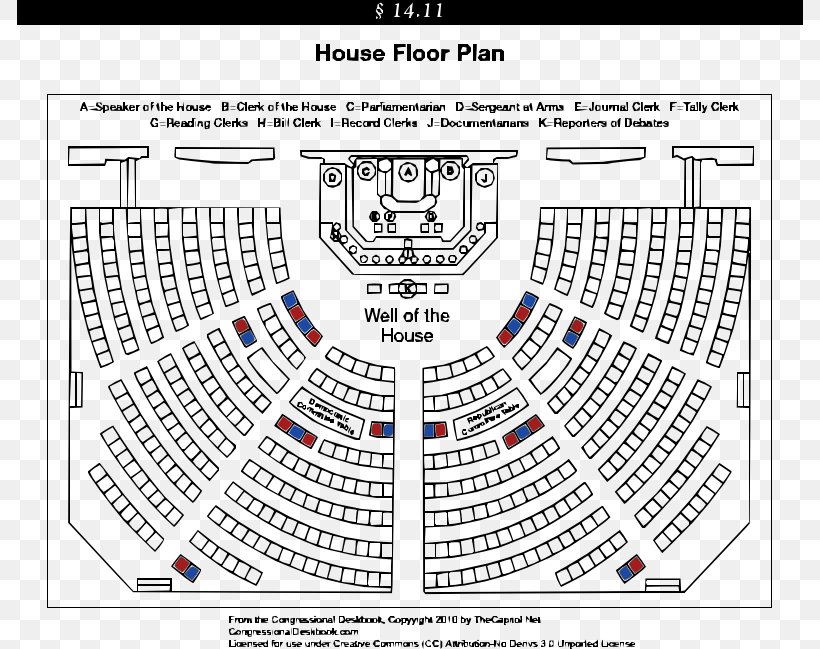Table Of Content

50% of senators are men over the age of 60, while only 7% of senators are women 60 years old or younger. The table below shows a breakdown of how many years the senators have been serving in office. Among those seats, 10 are currently held by Democrats and 12 are held by Republicans. This year, Democrats face a tough map if they hope to regain control of the House, while Republicans have a slight advantage in growing their majority. This story has been updated with the correct name of the representative for Louisiana's 5th district. Another argument for increasing the size of the House is that is would diminish the influence of lobbyists.
For federal agencies
32% of representatives are men over the age of 60, while only 17% of representatives are women 60 years old or younger. The table below shows a breakdown of how many years the representatives have been serving in office. At the conclusion of each decennial census, the results are used to calculate the number of seats to which each state is entitled. Each of the 50 states is entitled to a minimum of one seat in the U.S. Among the Bill of Rights amendments to the United States Constitution proposed by Congress in 1789, was one addressing the number of seats in the House.
Former Speaker Kevin McCarthy to exit Congress, along with a flock of other lawmakers • Nebraska Examiner - Nebraska Examiner
Former Speaker Kevin McCarthy to exit Congress, along with a flock of other lawmakers • Nebraska Examiner.
Posted: Wed, 06 Dec 2023 08:00:00 GMT [source]
How many Republicans are in the House? Majority and Democrat seats explained.
Once again, this would have prevented any state from losing a seat, a politically attractive option.5 But this time both parties were deeply divided over expanding the House, with arguments that adding seats would be too expensive or hinder legislative functions. The 435 congressional districts do not include the District of Columbia, Puerto Rico, and the U.S.’s four other island territories — American Samoa, Guam, the Northern Mariana Islands, and the U.S. Virgin Islands — which each send a non-voting delegate to the House. The calculation methods used through most of the 20th century have been based upon the use of a mathematically determined priority listing of states.
Find Your Representative and Senators
The committees also play an important role in the control exercised by Congress over governmental agencies. Cabinet officers and other officials are frequently summoned before the committees to explain policy. The Constitution (Article I, section 6) prohibits members of Congress from holding offices in the executive branch of government—a chief distinction between parliamentary and congressional forms of government. USA TODAY is exploring the questions you and others ask every day. From "When is the next presidential election?" to "Which senate seats are up for re-election in 2024?" to "Who is running for president?", we're striving to find answers to the most common questions you ask every day.
Members of Congress
However, Congress continued to pass ad hoc apportionment bills from 1850 through 1900 which overruling the procedure laid out, particularly in the 1860 Census (complicated by the Civil War), where no real apportionment method was used. Historically, many territories have sent non-voting delegates to the House. While their role has fluctuated over the years, today they have many of the same privileges as voting members, have a voice in committees, and can introduce bills on the floor, but cannot vote on the ultimate passage of bills. Presently, the District of Columbia and the five inhabited U.S. territories each elect a delegate. A seventh delegate, representing the Cherokee Nation, has been formally proposed but has not yet been seated.[30] An eighth delegate, representing the Choctaw Nation is guaranteed by treaty but has not yet been proposed.
h Congress
No member may make a speech or a motion unless they have first been recognized by the presiding officer. Moreover, the presiding officer may rule on a "point of order" (a member's objection that a rule has been breached); the decision is subject to appeal to the whole House. Seats vacated during a term are filled through special elections, unless the vacancy occurs closer to the next general election date than a pre-established deadline. The term of a member chosen in a special election usually begins the next day, or as soon as the results are certified. Under Article I, Section 2 of the Constitution, seats in the House of Representatives are apportioned among the states by population, as determined by the census conducted every ten years. Each state is entitled to at least one representative, however small its population.
Government information
Of course, this isn’t true of every democracy Shugart and his co-authors studied. Some countries like the U.S. fall well below the cube root of its population. And countries like Australia, India and Israel are even more underrepresented than the U.S. in their legislatures.11 It’s also the case that some countries like Germany, Italy and the U.K. May actually be overrepresented in their lower chambers — for instance, the U.K.’s House of Commons has 650 seats, well more than the expected 404 seats.
Each standing committee considers, amends, and reports bills that fall under its jurisdiction. Committees have extensive powers with regard to bills; they may block legislation from reaching the floor of the House. Standing committees also oversee the departments and agencies of the executive branch.
The embattled representative also faces several federal charges, including money laundering, wire fraud, identity theft, credit card fraud and lying to Congress. A House Ethics Committee report found evidence he broke federal laws and misused campaign funds. According to Shugart, the reason why representation in countries’ lower chambers is often so close to the cube root of their populations is that the legislators must strike a balance between communicating with one another and their constituents. And in many countries, that seems to be roughly the cube root of a country’s population.
Regardless of the potential benefits of a bigger House, though, there would likely be steep opposition to expanding it because of some of the tradeoffs — and potential downsides — involved. For instance, a larger House would by necessity mean a bigger government and more spending. House members make $174,000 per year, and after five years of service they are also eligible for a pension. Combine that with new staff, new construction for office space, perhaps even a roomier House chamber and you’re talking about many millions or even billions of dollars. Matthew Shugart, a professor emeritus at University of California, Davis, has tried to unpack why this is often the case.
Though California is a heavily Democrat state, it also has Republican strongholds in the northern region and parts of the agricultural Central Valley, home to House Minority Leader Kevin McCarthy. The city's mayor, Democrat Robert Garcia, has already announced plans to run for Congress. Women make up more than a quarter (28%) of all members of the 118th Congress – the highest percentage in U.S. history and a considerable increase from where things stood even a decade ago. Rep. Mike Johnson, R-LA, was sworn in as the 56th speaker of the House seat on Oct. 25. Here is what you need to know about the House in the 118th Congress. Read USA TODAY’s coverage of election toss-ups and races to watch here.

On Oct. 3, McCarthy was voted out as speaker, becoming the first speaker in U.S. history to be removed from the role during a legislative session. Official websites use .govA .gov website belongs to an official government organization in the United States. There are 219 Republicans in the House of Representatives after Santos’ Dec. 1 exit.
New California congressional maps finalized Monday leave the Los Angeles area with one fewer U.S. House seat and set up a handful of highly competitive races for next year's midterm elections. The 19th Amendment, which extended voting rights to women across the nation, was ratified in 1920. That November, Alice Mary Robertson of Oklahoma became the first woman to defeat an incumbent congressman. Nevertheless, the Republican chair of the House Census Committee put forward legislation in 1921 to increase the size of the House by 48 seats — 483 in total.










